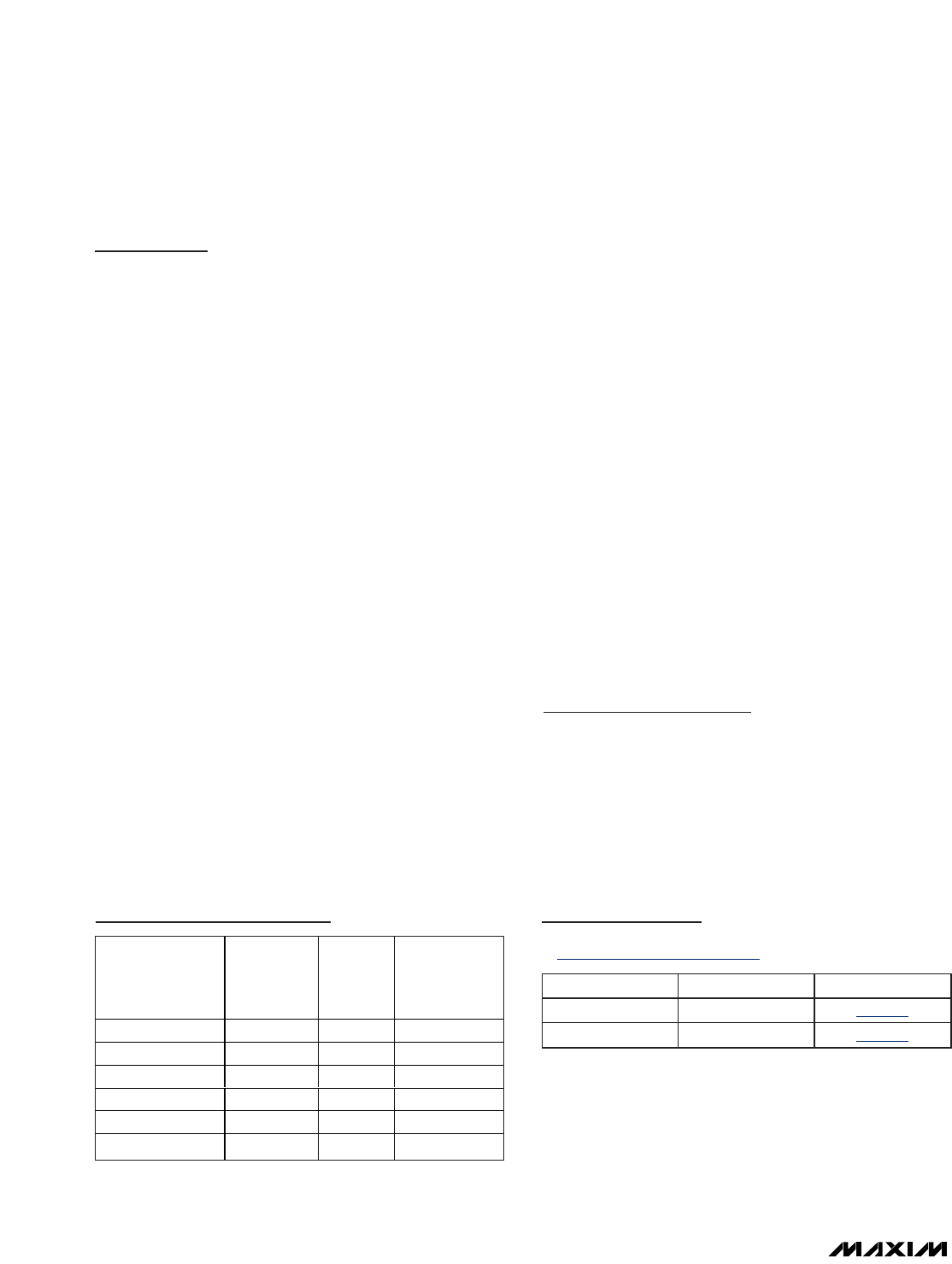Datasheet

Applications Information
Capacitor Selection and
Regulator Stability
Capacitors are required at the MAX1818’s input and
output for stable operation over the full temperature
range and with load currents up to 500mA. Connect a
1µF capacitor between IN and ground and a 3.3µF low-
ESR capacitor between OUT and ground. For output
voltages less than 2V, use a 4.7µF low-ESR output
capacitor. The input capacitor (C
IN
) lowers the source
impedance of the input supply. Reduce noise and
improve load-transient response, stability, and power-
supply rejection by using larger output capacitors, such
as 10µF.
The output capacitor’s (C
OUT
) equivalent series resis-
tance (ESR) affects stability and output noise. Use out-
put capacitors with an ESR of 0.1Ω or less to ensure
stability and optimum transient response. Surface-
mount ceramic capacitors have very low ESR and are
commonly available in values up to 10µF. Connect C
IN
and C
OUT
as close to the MAX1818 as possible to mini-
mize the impact of PC board trace inductance.
Noise, PSRR, and Transient Response
The MAX1818 is designed to operate with low dropout
voltages and low quiescent currents in battery-powered
systems while still maintaining good noise, transient
response, and AC rejection. See the T
ypical Operating
Characteristics
for a plot of power-supply rejection ratio
(PSRR) versus frequency. When operating from noisy
sources, improved supply-noise rejection and transient
response can be achieved by increasing the values of
the input and output bypass capacitors and through
passive filtering techniques.
The MAX1818 load-transient response (see T
ypical
Operating Characteristics
) shows two components of
the output response: a DC shift from the output imped-
ance due to the load current change, and the transient
response. A typical transient response for a step
change in the load current from 100mA to 500mA is
8mV. Increasing the output capacitor’s value and
decreasing the ESR attenuates the overshoot.
Input-Output (Dropout) Voltage
A regulator’s minimum input-to-output voltage differen-
tial (dropout voltage) determines the lowest usable sup-
ply voltage. In battery-powered systems, this
determines the useful end-of-life battery voltage.
Because the MAX1818 uses a P-channel MOSFET pass
transistor, its dropout voltage is a function of drain-to-
source on-resistance (R
DS(ON)
) multiplied by the load
current (see
Typical Operating Characteristics
).
V
DROPOUT
= V
IN
- V
OUT
= R
DS(ON)
× I
OUT
The MAX1818 ground current remains below 150µA in
dropout.
MAX1818
8 _______________________________________________________________________________________
500mA Low-Dropout
Linear Regulator in SOT23
PART AND
SUFFIX
V
OUT
SOT23
TOP
MARK
SOT23
TOP MARK
(RoHS
COMPLIANT)
MAX1818EUT15 1.5V or Adj AASO ABZM
MAX1818EUT18 1.8V or Adj AANU ABZG
MAX1818EUT20 2.0V or Adj AANV ABZJ
MAX1818EUT25 2.5V or Adj AANF ABZK
MAX1818EUT33 3.3V or Adj AANG ABZH
MAX1818EUT50 5.0V or Adj AANH ABZL
Selector Guide
Chip Information
TRANSISTOR COUNT: 845
Package Information
For the latest package outline information and land patterns, go
to www.maxim-ic.com/packages
.
PACKAGE TYPE PACKAGE CODE DOCUMENT NO.
6 SOT23 U6F-6
21-0058
6 SOT23# U6FH-6
21-0058









